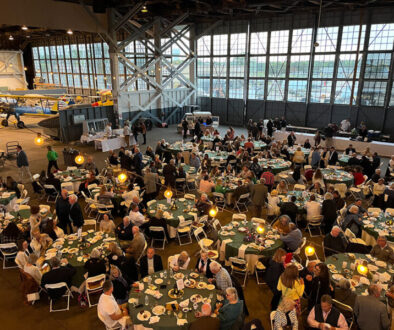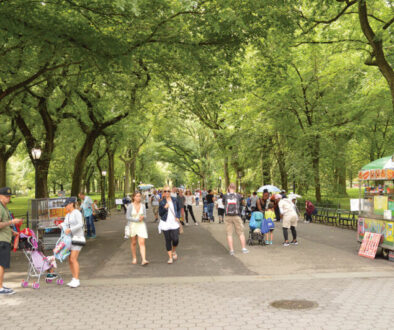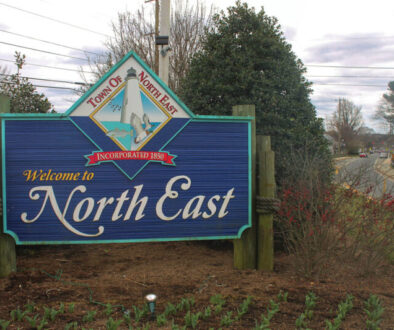The Jennie Lane Cottage
41 Jackson Street

Strolling is one of my favorite Cape May activities. Stroll to the beach, stroll to dinner, or stroll without a destination, it’s all about the journey in the Queen of Seaside Resorts. And given the opportunity, I choose a stroll that leads me to Jackson Street. It sings with coffee and songbirds in the morning and glass-tinkling excitement at night. Jackson Street is one of the oldest roads in town and is lined with well-kept historic structures.
Tucked down a driveway on the east side of the street, in the middle of it all yet at a quieter distance, sits the Jennie Lane Cottage, a freestanding, brightly appointed cottage at 41 Jackson Street. Honestly, I don’t think in all my strolls I ever truly noticed this gem.
“We purchased the property in 2006,” said J.G. Harrington, who owns the property with his wife Gere Givver. “At that time the property was owned by Harry Kulkowitz and Vicki Seicheck, who had purchased it sometime in the 60s. They decided to turn the property into condos, and we had been staying in the cottage at least 10 years—longer, really. Forever actually! The cottage became almost our home in Cape May. When the opportunity came, we figured out a way to afford it because we figured it was something we had to do—we couldn’t imagine coming to Cape May and not staying here.”
On a street lined with notable old homes, the two structures comprising 41 Jackson are distinctive. The main house and cottage almost completely fill the 52’x120’ lot. The main structure is a three-story Second Empire-style home, featuring decorative ornamentation, mansard roofs, and a rectangular, symmetrical design. Constructed in the early 1870s, it fronts Jackson Street with only a small setback from the street. In its century of service, it’s operated as a private residence, a boarding house, a hotel, an apartment house, and is currently configured as condominiums. The Jennie Lane Cottage is a separate, two-story, 1000-square feet home perched on the southeast corner of the property and was most likely constructed around 1910, according to Harrington.

The main building reportedly survived the Fire of 1878. When Harry Kulkowitz and Vicki Seicheck owned the property, they applied to the state for Historic Preservation Certification in 1986. They filed their research with the preservation office in Trenton and a subsequent 2007 historic survey cited the pair’s work in compiling the property’s history.
“Prior to 1869 the property belonged to the McMakin family,” according to the application. “On August 31, 1869, a fire destroyed every structure in the area bounded by Washington Street, Jackson Street, Ocean Street, and the ocean with the exception of the Columbia House which was saved by a wind shift. In December, McMakin sold the 52’ x 122’ lot that is now 41 Jackson Street to Alexander McConnell for $4000. This presumably was a lot covered in charred timbers and ashes.”
Alexander and his brother John purchased several properties along Jackson Street, and in the early 1870s Alexander hired builder Enos Williams to construct buildings to be used as rooming houses. But in 1878 another great fire swept through Cape May and destroyed all buildings south of 35 Jackson. The buildings north of 35, including 41 and 37 somehow survived, leaving them the distinction of being the oldest homes on the street. The historic survey puts construction of the Jennie Lane Cottage around 1920.
“Harry and Vicki bought this place in the 60s,” said Harrington. “The cottage itself is newer than the main building. The main building is post-fire but the cottage we think is around 1910. It’s L-shaped and tucked around the side and back. The main building, we think was used as a boarding house, but the cottage feels more like it was used as a residence.”

The cottage was recently renovated, and today it sleeps eight. There’s a full kitchen and dining room, and the front porch is perfect for coffee. The interior is clean and bright with an airy feel and comfortable decor.
“We love that it’s tucked away but close to everything,” said Harrington. “And that block of Jackson Street is one of the prettiest places in town.”
Jackson Street was reportedly a path to the ocean created by the local Kechemeche inhabitants who hunted and fished on the island. That path later became Cape Island Road and appears on maps as early as 1842. Jackson Street has been home to taverns and boarding houses since the 1700s and remains a prime spot for overnight visitors. Alexander McConnell was the original owner of the Ebbit House, now the Virginia Hotel. Jackson Street is also rumored to be among the most haunted streets in America, with ghosts rumored to be swirling about the eaves of many of the homes between Carpenter’s Lane and the ocean.
The entire property is listed as a “contributing resource” to the Cape May Historic District, and the HABS (Historic American Buildings) survey describes the main house as a “good example of mid-19th Century Second Empire style,” notable for its wood sash windows and bracketed dormers.

The survey describes 41 as one of five “mansard style buildings that line the east side of Jackson, including 29, 35, 37 and 45.” A 1951 survey maps shows the property listed as the “Wellington Apartments” and it was known as the “Rivendale” when Harry and Vicki owned it. The survey also noted the property’s history includes Sol Needles, a local Cape Mayan who was an important local figure in the early 20th century.
“The building is closely associated with the family of Sol Needles, who although not an important state or national figure, was important to the City of Cape May during the first third of the 20th century. Many older Cape May residents had family or friends living at 41 Jackson during the past three generations.”
And while the main house was probably built for multiple occupancies, Harrington thinks the cottage was built specifically to be used as a single unit.
“We did a big renovation last year and we found some interesting things, including nice wallpaper which makes me think the cottage wasn’t a part of boarding house—it’s not configured that way—there are no hallways with adjoining rooms. The cottage is set up like a house, a beautiful house. For someone who didn’t want to stay in the boarding house.”
A home of its own, one might say. ■



